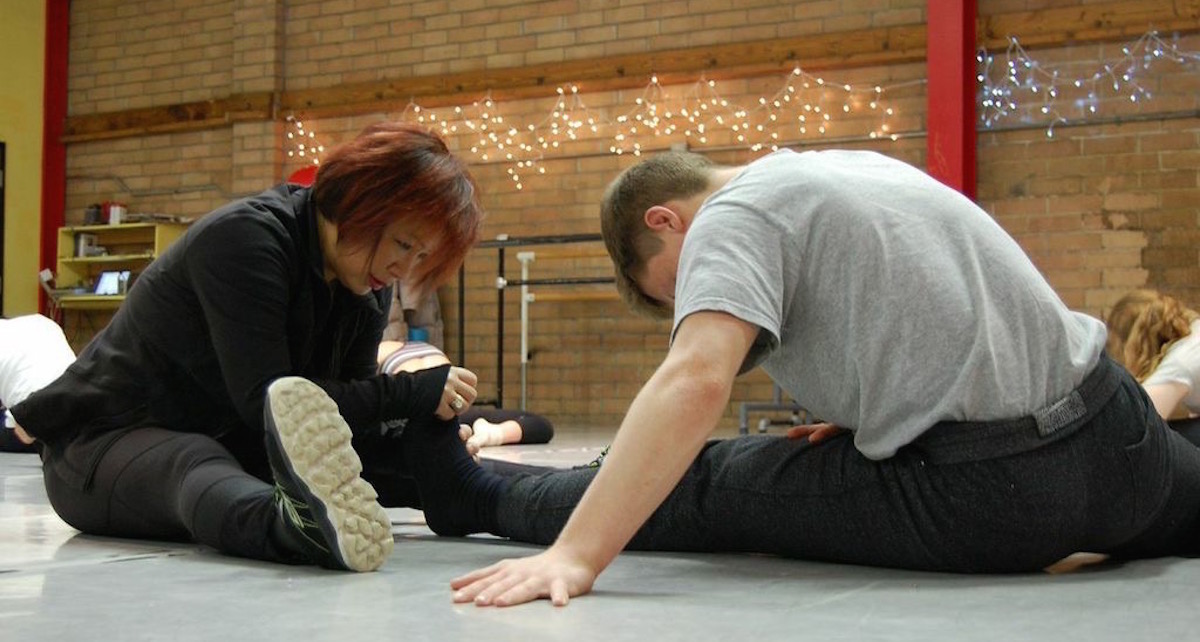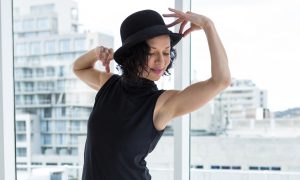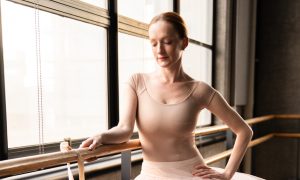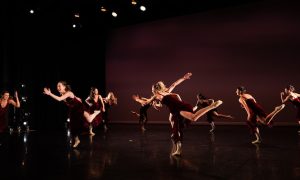Around the competition circuit, and the “how does she produce so many amazing dancers?” circuit, Dale Lam at Columbia City Jazz is a force to be reckoned with. In Columbia, South Carolina, Columbia City Jazz is home to several award-winning dancers and teachers, and has master choreographers like Travis Wall and Andrew Winghart. Dance Informa had the honor of delving into the brilliant brain that is Lam about her teaching methods and her wonderful advice for studio owners.
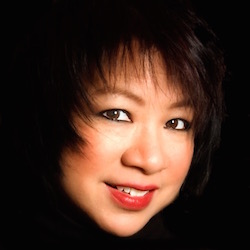
Dale Lam, Director of Columbia City Jazz. Photo courtesy of Lam.
Tell me about your dance background.
“I started dancing by taking ballet first, then got into musical theater because I could sing. I studied under Frank Hatchett in NYC after I was discovered in a master class in South Carolina by his assistant Robin Dunn. I did summer stock, musical theatre shows and revues in Norway, Spain, Turkey, Greece, summer stock in a resort in Fairfield Glad, Tennessee, and the Carowinds Theme Park show, until I settled back home to teach in Columbia, South Carolina.”
How and when did Columbia City Jazz come about?
“I started teaching dance at the Columbia Conservatory of Dance, which houses the professional ballet company, Columbia City Ballet. My program was just a jazz program, not a company, at first, but it started to grow so much that we formed a pre-professional company which is now Columbia City Jazz, and it has been a formed 501C3 for 24 years.”
What is your favorite part of your job?
“Teaching. I don’t like the business end of a studio. That’s what my husband does. I am the dreamer, and he is the realist. We are a great combination.”
How many students are currently enrolled at Columbia City Jazz? And how many are in the company?
“I have around 40 dancers committed to Company and about 150 total recreational and company students enrolled at CCJC.”
How do you balance work and running a company with your personal life?
“It’s tough…I don’t have much of a personal life. It mostly involves the company kids. I wasn’t able to have children of my own, and my husband and I decided I would devote my life to sharing [my students] with their families. This company is more of a working lifestyle than a job. My inspiration comes from creating a future for these dancers and to be content with seeing how far they can go with their dance dreams. Some have gone pretty darn far.”
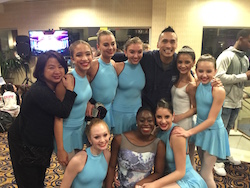
Dale Lam and students with Francisco Gella. Photo courtesy of Lam.
What is the most challenging aspect of your job?
“The business end — schedules, budgets. We are trying to build a permanent home for the dancers. We rented and had to move when the property was sold, so we are on a mission now to build and own a studio so the kids don’t have to be told to move ever again. I know how to create a fine dancer. The money to do that is what my husband does to make it happen for the kids and me.”
How do you handle difficult situations with all of the company parents?
“Stay true to the rules and policies that govern the company. Parents don’t teach dance, so I try very hard to help them understand that I do and have for almost 30 years. Also, making their children accountable for their part of the training through bi-yearly exams is important in keeping the parents updated with their child’s progress throughout the season. This helps prepare the parents on what to expect and what things their children need to do to step it up.”
What is some advice for studio owners wanting to grow their business and achieve success?
“You have your own style, your own focus/direction on how you believe your studio should be measured. Stay true to that and don’t waiver, no matter how many skeptics you run across. Brand your studio! Make sure every potential student/family knows exactly what you offer and what you are about at your studio. That way, all of you go into this relationship with your eyes wide open.
And one more thing…doing whatever it takes to be bigger and better may not be right for you. It wasn’t for me. Being a small studio is better for me when it comes to training students. Because that’s my goal, detailed, one-on-one training as much as possible. We teach through understanding how a correction should feel. It’s great in helping dancers form better body awareness, so it takes time with every student. I can’t mass-produce great dancers…each one is different.
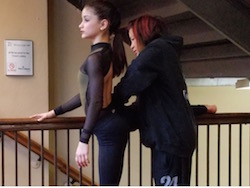
Dale Lam getting student Camille ready for her solo. Photo courtesy of Lam.
I had to choose whether I wanted to create quality or quantity. Some studios can do both, and I think that’s amazing, but not for me. Over the years, I have learned to be blessed about what we are and how we do it. We’ve been here for 25 years training dancers, so balancing out what we needed and how we needed to do it has been a challenge, but one that has been very rewarding.
I have one child on Broadway in the revival of Cats this fall, one who graduated as a dance major this year at Marymount, another one who is a key member of Shaping Sound and appeared as a finalist on season 11’s SYTYCD, and one former student who is a working professional dancer in LA. The dreams keep coming, and the magic we create still continues. We are this little ‘David’ in a world of ‘Goliath’ studios. The slingshot we use is passion and staying on top of the pulse of dance education.”
By Allison Gupton of Dance Informa.
Photo (top): Dale Lam of Columbia City Jazz assisting a student. Photo courtesy of Lam.


